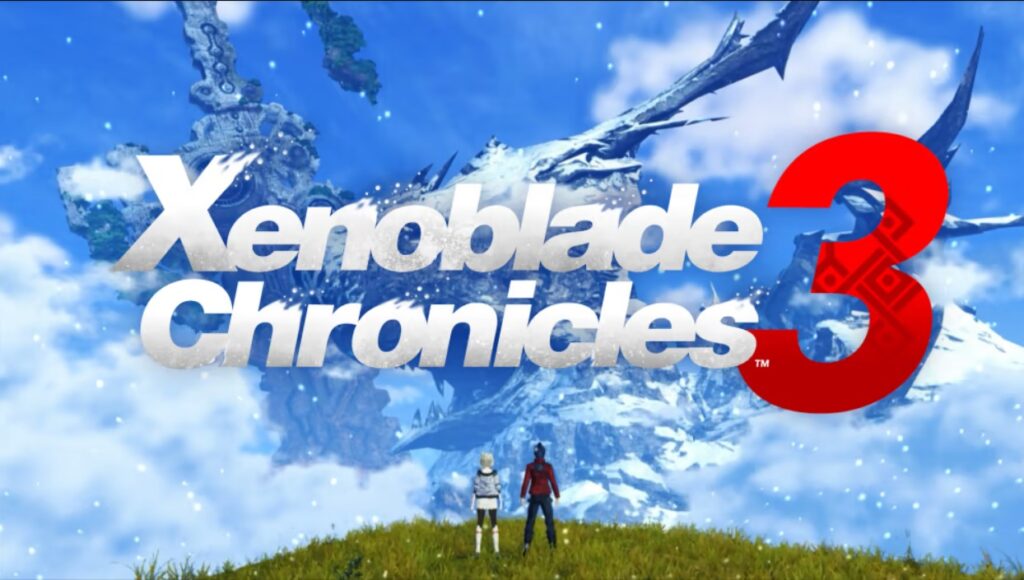
Image Source: Nintendo
Xenoblade Chronicles 3: Choosing Each Other to Break the World
When I talk about JRPGs to people who don’t play them, I tend to say that they’re games about systems. Final Fantasy X is populated with enemies who can inflict status effects and elemental damage, and divides the tools with which to counter them among seven party members. Pokemon has an 18-type element system – your ability to make that system work for you as the player comes down to knowing how those types interact with each other, before anything else.
Like those games, Xenoblade Chronicles 3 has systems. The party can string together chains of status effects for massive damage, and initiate combo attacks that shred through half a health bar like a sword cutting through destiny. When you get into an RPG’s systems – when you really make a stat-statined grease monkey out of yourself over the dang things – you think a lot about how those systems talk to one another. Once you understand the building blocks of victory, how many different ways can you stack them together? In a game with character classes, what black mage ability becomes all more broken if you give it to a bard? Often, RPGs are about learning the game’s balance, and disbalancing it. In XC3, it’s not just mechanics being balanced, but the world itself.
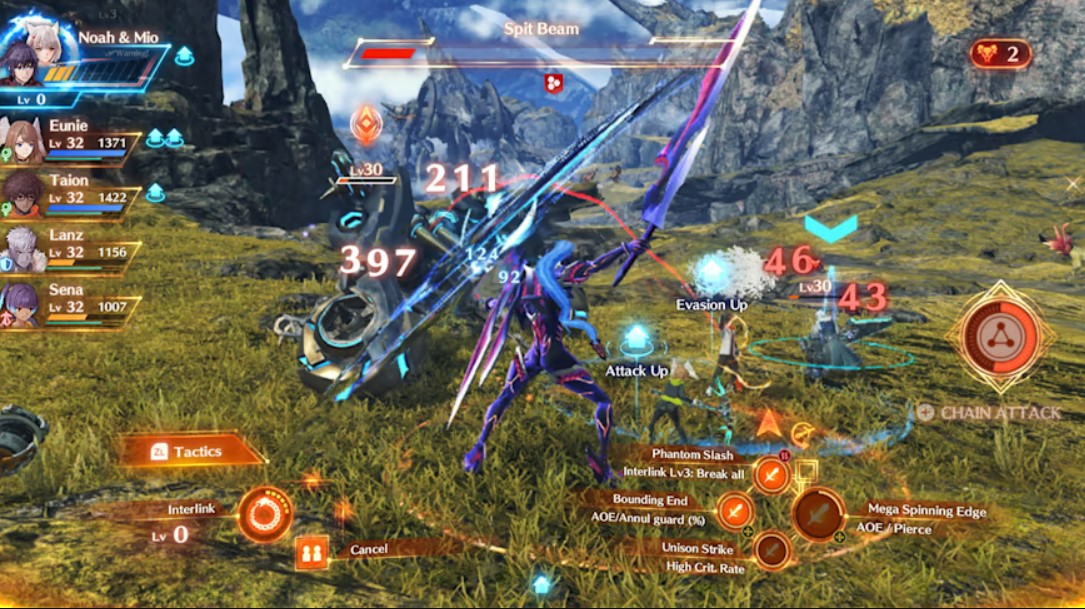
What do you do when you’re not part of the existing system anymore? That’s the question that Xenoblade Chronicles 3 delights itself with. It crafts its six protagonists into a bowling ball, rolling through the societal system they’ve broken free from. They’ve traded that system in for a new one – narratively and mechanically, they have chosen each other.
XC3’s setting of Aionios is locked in an endless cycle of life and death. Nearly all of its residents are child soldiers, born around the age of 10, and given a decade-long lifespan to serve their kingdom in battle before dissolving into light and returning to the cycle that put them there. Both sides are quite literally fighting to live, harvesting the life force of their opponents – not directly into their own bodies, but into giant, eerily-faced machines crowned with wheels of light called Flame Clocks. Sure, each side notices how eerily similar it is to its opponent – using the exact same tools of war, just with different colors and aesthetics. Sure, they wonder about the masked queens who rule them from a distance. But what are they to do but laugh it off and charge back into battle? That’s life.
Except if it isn’t. In the opening act of XC3, six soldiers – three from Agnus, three from Keves – are given the gift of removal from the system that has defined their lives. When teams led by main protagonists Noah and Mio respond to an attack by an unknown foe, they engage in a fierce battle, only to be halted once they learn that they have a common enemy. A dying stranger gives the six soldiers the gift of Ouroborus, a power that unshackles their lives from the flame clocks, effectively taking away the only reason they had to fight. Imagine breathing air your whole life and then waking up one day to find you also have gills. Or, more accurately, imagine not having to barter out five or more days of every week of your life just to afford a place to live.
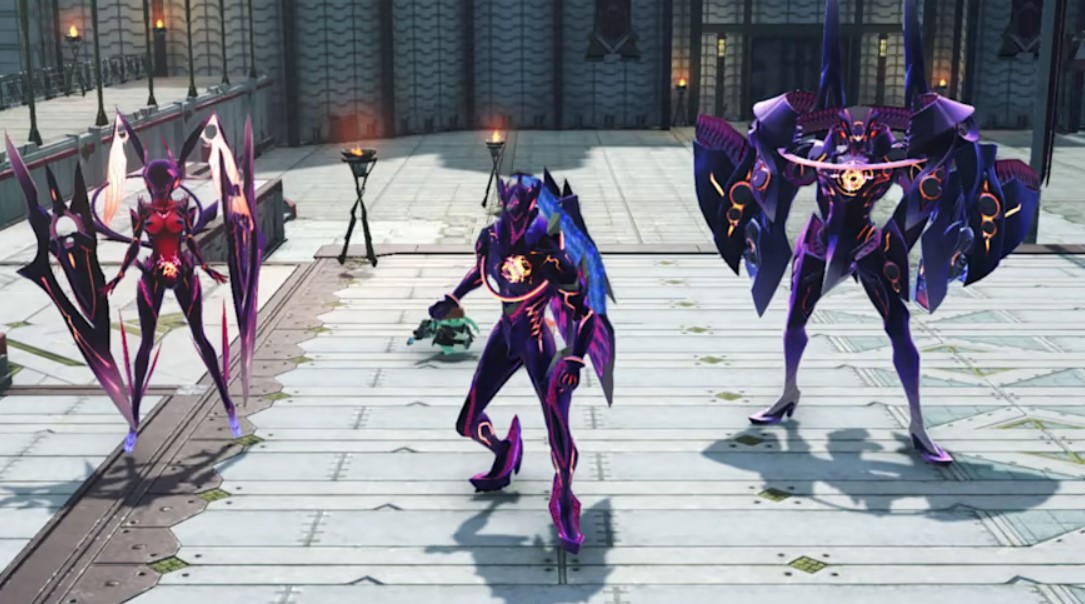
Armed with a new identity and the ability to fuse into a trio of rebellious giants when the going gets tough, Ouroborus is handed a goal – travel to the enormous sword sticking out of the far end of Aionios – and starts the long journey there. They also learn the name of their true enemy – Moebius, a group of crimson-clad nobles who have built the deathly system of life on Aonios into what it is. Ouroborus’ six lives have been removed from that system of “how things are,” and become their own closed-loop system of “how things could be.”
Mechanically, this comes up immediately. All six characters are in play at all times in XC3’s real-time battles, with the player switching direct control between them as needed. All six have their own classes – Noah is a Swordsman, for example, while hothead markswoman Eunie is a Medic Gunner (armed to the teeth with quips as well as ammo.) Quickly after freedom is achieved, the party learns that they can change classes. It’s not an immediate free-for-all. The six are divided into three pairs who can swap; Swordsman for Zephyr, Heavy Guard for Ogre, Medic Gunner for Tactician.
The game tells us that this division is based on who in the party has the next-highest affinity for whose skill. Everyone else has to work for it. As party members fight alongside different classes, they will gradually gain the ability to try those classes on for themselves. Even if the guy with the giant shield doesn’t seem like he’d be good at healing and buffs, he’s welcome to give it a try. Soon, the party starts gaining more classes – 25 by postgame, plus a couple more in the DLC.
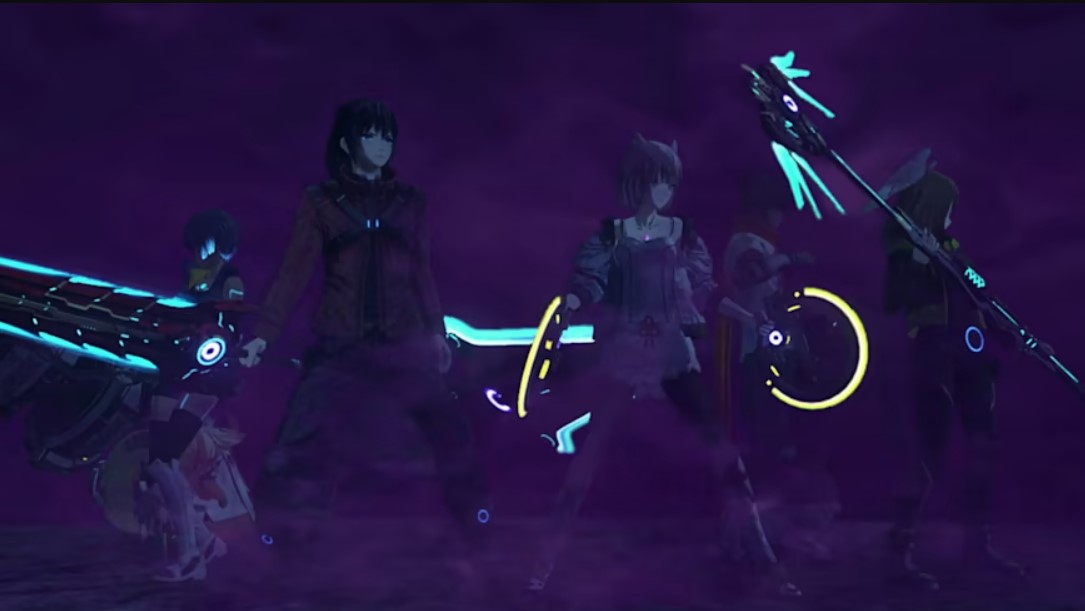
Each class has skills that, when brought in concert with what the player can already do, can turn the tables on challenging fights, reorganize strategy, and feel like a superpower. Half of a character’s attack slots are for techniques specific to their current class. The other half is populated by a custom selection of carryovers from other classes they’ve used. Attacks can be used in pairs, one from each of those two categories, letting you use one character’s skill to get the best out of another. If you’re playing a defender character, whose job is to get enemy attention and keep it on you, an attack that does just that can be paired with a healing move that helps out whoevers attention that giant crab or soldier-eating robot was getting beaten before you stepped in. Often, the combining of two abilities neutralizes drawbacks and gets you the best of both.
Combining attacks isn’t an idea unique to XC3, but the road there is. After the first six, each character class is obtained through an additional optional party member, any of whom can fight alongside the party in an AI-controlled seventh slot. The majority of these characters are the leaders of other colonies across Aionios, who ally themselves with Ouroborus once they learn who the real enemy is. One member of your party will get the ability to try on the new friend’s class immediately, usually based on who gets along with them well in the story. Noah inherits the Flash Fencer class from Silvercoat Ethel, an older soldier who he has looked up to since he and his fellow Kevesi soldiers saw her fight years ago. Lanz, the team’s guardian himbo with a quietly vulnerable heart, becomes something like a big brother figure, first with Valdi the War Medic, and later witrh Fiona the Signifier – both much younger characters in need of an emotional tree to lean up against.
From there, as before, the rest of the party work towards access to the new classes by fighting alongside those seventh-slot heroes, or a party member using their class. Because pretty much every attack in the game is unique to a character, you never really forget who gave them to you. At the endgame, my Noah was using the Flash Fencer class, which uses some potent directional attacks (front, side, back). One of those was linked to an attack from the Stalker class – obtained from a character named Juniper – which would power up certain directional attacks and fold perfectly into parts of what the Flash Fencer could do. Hit from the side, get a boost for your next hit from the back, and mosey your way on behind the enemy to make good use of it. Juniper was one of my favorite allies made over the journey across Aonios, and it always meant something to me to see one of her own unique abilities in action. XC3’s class system is made all the better because each comes from an ally who matters.
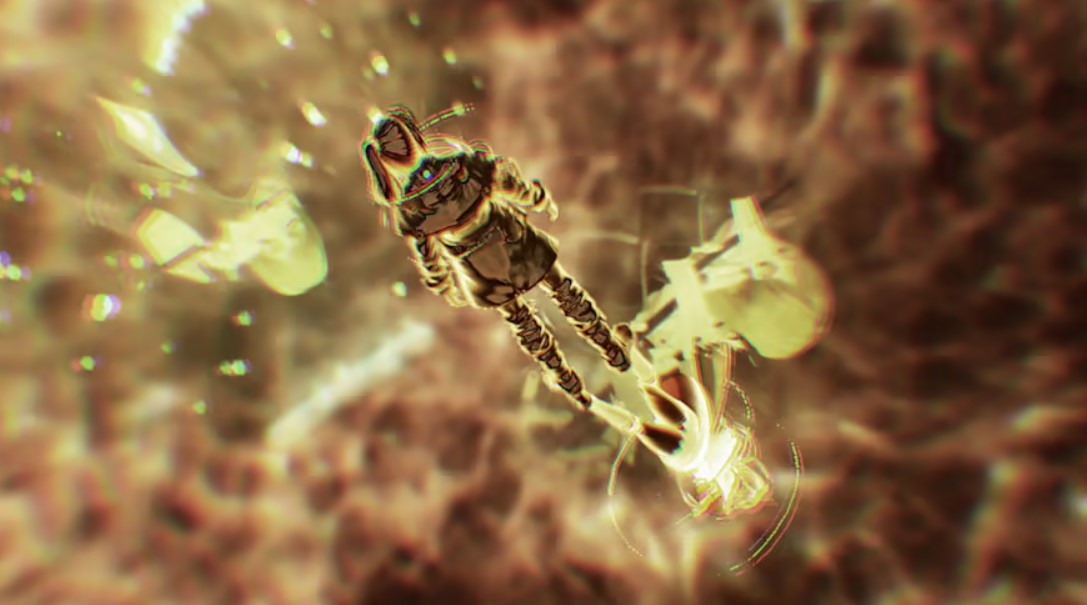
Each time one of Keves or Agnus’ colonies is liberated from the Flame Clock, they’re given the same gift as the main gang – a release from “how things are.” That doesn’t mean they’re part of the Ouroborus loop – there are powers afforded to the party of XC3 that, from the outset, can only be shared among the six of them. While this whole list of memorable characters is lending you their strength, only one of them is actually at your side at any given time. All of their techniques, all of their skills, are just mementos – keepsakes the party takes as they move on.
In both Aionios and the real world, there’s an acute difference between awareness of the systems that hold you down, and ability to do anything about them. People living with disabilities struggle to find jobs that can accommodate their basic human needs. Single parents take on two or three jobs in order to take care of their children – a circumstance made harder if they live in places where the cost of living is rising. A system of stasis – of “balance,” held in place – does what its creators want best when its subjects are kept too busy to take action against it. Such a system thrives when it is not by laziness, but by survival, that its inhabitants feel resigned to the injustice pulling their strings, even if they are wise enough to notice the threads.
Once the strings are cut – as they are for each colony in Aionios – there’s a lot of work to be done. Once freed, Noah’s home of Colony 9 gets into farming, eventually sharing skills with Juniper at a former enemy colony in order to build a better future for them both. Lanz’s friend Valdi keeps tinkering with robots in Colony 30, working to create machines that can help people (including one he calls “Robofriend,” which is just the cutest). XC3 shows what it means to start a revolution across whole communities, not just on the front lines of battle. No matter how great the war, somebody has to do the dishes. Someone has to sew the clothes. And, even if they’re not all alongside the party at once, the leaders of Aionios’ communities are still part of Ouroborus, through their attacks and classes being put to good use. In the revolution, everyone’s ability can be someone else’s tool, and every tool will be in good hands.
By the end of the game, the party has access to abilities that break down earlier mechanics and make them work for the players – critical hit rates, stat buffs and recharge speeds are all under your control in a way that would have seemed improbable at hour 1. At the same time, one by one, the game’s communities are all learning from each other. Ouroborus may only directly refer to XC3’s main six characters, but everyone freed from the Flame Clocks is a part of it, in their own way. Starting a farm may not be as flashy as landing a 400x critical hit – but the people of Aionios have to choose each other – choose a system where they write the rules – to do either.
If you like what we do here at Uppercut, consider supporting us on Patreon. Supporters at the $5+ tiers get access to written content early.





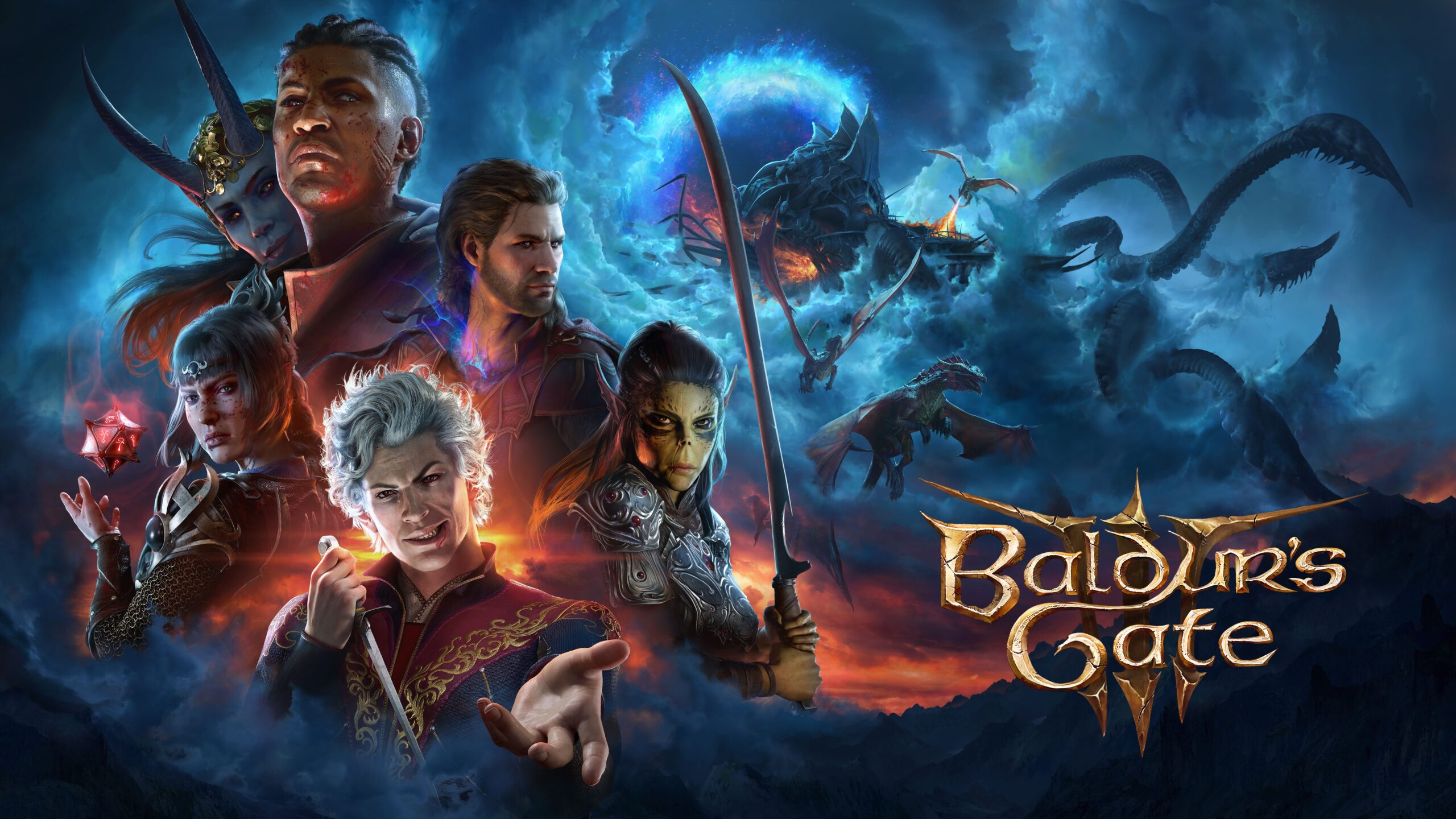
Sorry for a bit of correction, but Juniper is non-binary in the game. They are considered female in French and Spainish, however, due to language differences.
This was marvellously written and insightful! XC3 is next up in my library and reading through this has certainly got me excited to get to grips with it!
An interesting story brought down by far, far too many pointless fetch quests, long grinding and a terribly boring combat system. I literally fell asleep during the final boss battle and when I woke up the credits were rolling.
You really nailed it, I swear a lot of this was in my head when I was playing and you put it to words wonderfully.
These kinds of stories can be really hard to get right and they did. It’s one thing to write about how fucked a world is (say ours for example) and another thing entirely to write about how to change it and what that would look like.
“I’LL TEAR IT ALL DOWN!” – Noah, referring to both the in-universe systems that hold the world together, and simultaneously the balance that holds the gameplay together. There are plenty of purposely overpowered abilities in games, but I don’t know if I’ve seen another one that manages to be EXACTLY as overpowered in gameplay as it is in story.
I’ll also add that Signifer and Troubadour are two of the most broken classes in the game, and it’s entirely because they cheer on the rest of the team too hard. Fiona, you are already the single best cheerleader in Aionios. You don’t need to cheer so hard as to give the entire party every buff in the game!